Commercial fishermen on Canada’s west coast say it’s the worst season they’ve ever experienced.
According to Joy Thorkelson, president of the United Fishermen and Allied Workers Union, at least 2,500 people are affected by the record low numbers of salmon. Catches have been far below normal and some fishermen simply haven’t fished at all this season. She said many workers haven’t earned any money since last season. Others say the catches can’t even pay the fuel bills if they go fishing and at least one says he’ll have to give up his boat as he can’t make the bank payments.
“What’s happening is just a disaster for all the fisherman and shore workers, people who work in plants and who mend nets and have been waiting all summer for this season.” J Thorkelson
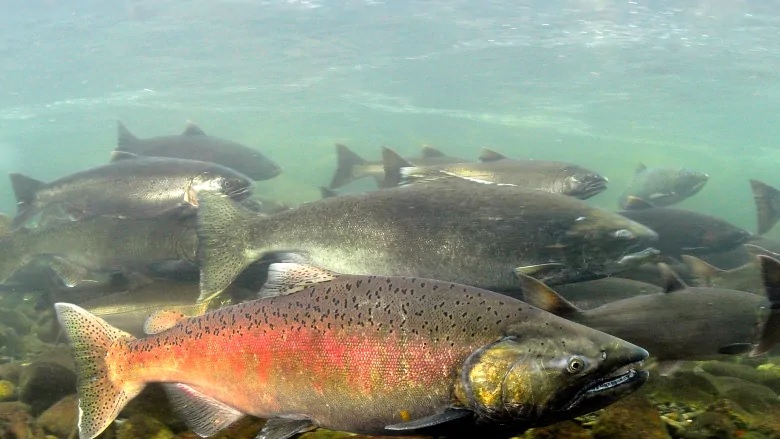
Most chinook salmon populations in Canada are in decline, according to the a 2018 statement from the Committee on the Status of Endangered Wildlife In Canada. (Paul Vecsei/Engbretson Underwater Photography)
Reasons for the low salmon returns along the B.C. coast are being cited as climate change, habitat destruction, and overfishing.
Salmon are born in freshwater rivers then head out into the ocean for up to five years before returning to those same rivers to spawn and die.
Earlier this year DFO says it believes a huge swath of warm ocean water five years ago, called the “blob”, killed off large numbers of salmon fry when they entered the ocean.
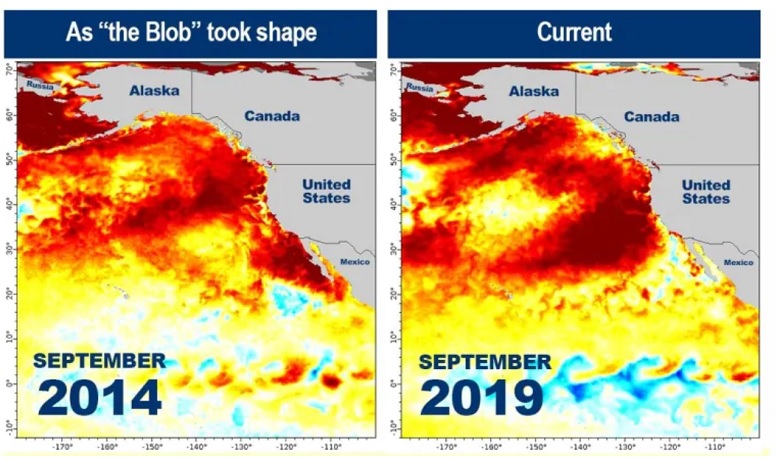
DFO says a “blob” of extra warm ocean water may have killed off young salmon fry heading to the ocean. This year shows a similar hot current forming. (NOAA)
Thorkelson says the federal Department of Fisheries and Oceans Canada (DFO) has never discussed a climate adaptation strategy with her or west coast fishers.
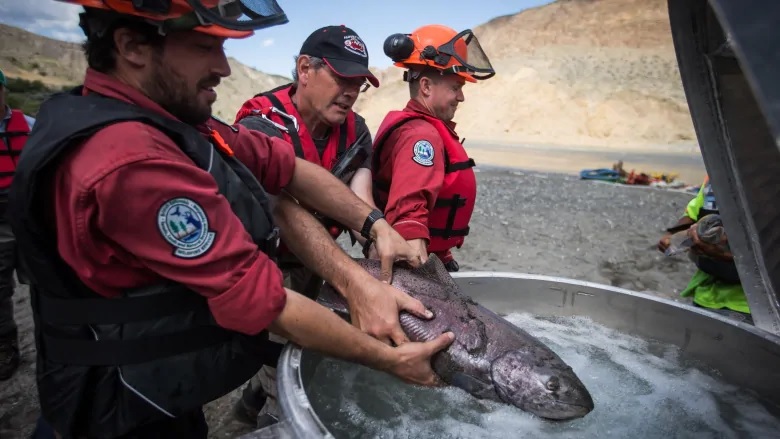
Michael Crowe, centre, of Fisheries and Oceans Canada, and two members of the B.C. Wildfire Service place a sockeye salmon in a vessel being used to transport them up the Fraser River with a helicopter, past a massive rock slide near Big Bar, west of Clinton, B.C., on July 24, 2019. It’s not known what effect the blockage will have on the salmon population. Fish are reportedly now being able to swim past the slide. The Fraser is one of the major salmon rivers in B.C. (Darryl Dyck/Canadian Press)
It had estimated a return of 5 million salmon, much lower than a long term average of just under 13 million.
Nevertheless, Thorkelson said fisherman geared up, but when they went out on the ocean the fish weren’t there.
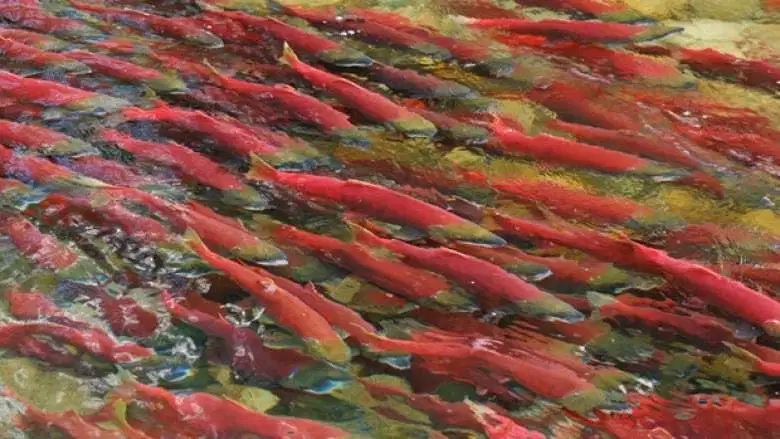
As they prepare to spawn sockeye salmon turn bright red. The males develop a pronounced humped back and longer snout, After spawning they will die. (CP)
Another looming issue for boat owners is finding qualified deckhands. The unpredictable nature of the fishery in recent years means more people are leaving the industry for stable work and this year’s lack of work will only add to that concern.
Additional information-sources
- Vancouver Sun: C Chan: Sep 9/19: B.C fishing disaster hits workers hard
- Globe and Mail: W Stueck: Calls for disaster relief for salmon fishery
- News 1130: Kelly/McMahon: Sep 8/19: Worst sockeye year on record
- Canadian Press (via CBC): Sep 9/19: Alarm sounded for B.C salmon fishery
- News 1130: A Kelly: Jul 11/19: low returns of “blob” babies prompts closure of sport fishery
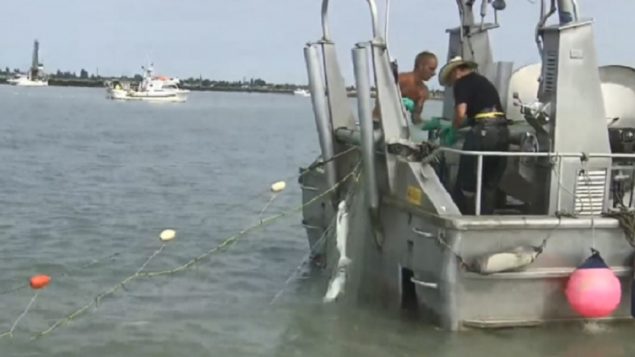






For reasons beyond our control, and for an undetermined period of time, our comment section is now closed. However, our social networks remain open to your contributions.